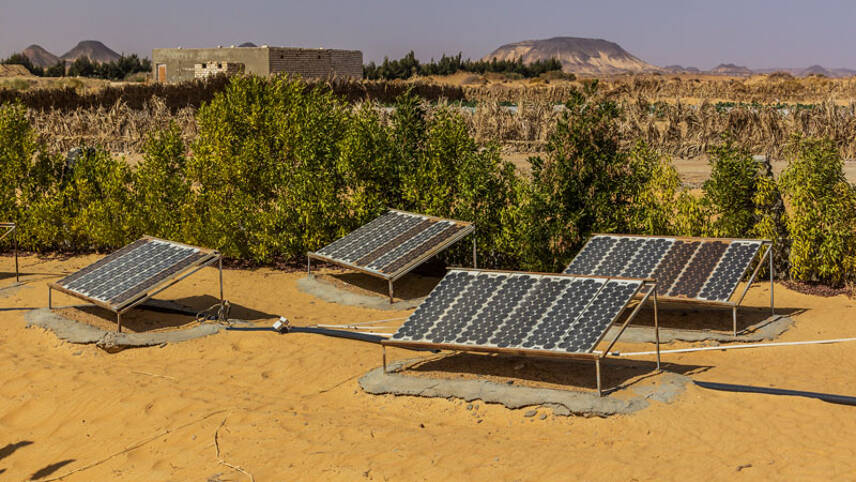Register for free and continue reading
Join our growing army of changemakers and get unlimited access to our premium content

Pictured: Solar panels in Al Hayz, Egypt
The figure is the headline of a new report co-authored by the International Energy Agency (IEA) and International Finance Corporation (IFC). It assesses the level of investment needed to meet the UN target on universal access to clean, affordable energy, plus align with the Paris Agreement on climate change.
According to the report, around $135bn of private financing and some $635bn of public funding flows to developing and emerging economies aside from China every year.
This will need to reach as much as $2.8trn by the early 2030s – and the report authors make clear that public funding cannot do most of the heavy lifting.
To scale private financing almost tenfold, to as much as $1.1trn by the early 2030s, the report recommends that nations concentrate their efforts on providing blended finance offerings. Doing so can help to de-risk private investment.
The IEA stated earlier this month that renewable power capacity is expected to increase by 33% this year – a new record. But most of the capacity increase will be concentrated in China, Europe and North America; Africa is set to lag behind.
“Today’s energy world is moving fast, but there is a major risk of many countries around the world being left behind,” said the IEA’s executive director Fatih Birol. “Investment is the key to ensuring they can benefit from the new global energy economy that is emerging rapidly.”
Financial architecture
At least $80bn of the $2.8trn will need to flow to newer technologies that are not yet cost-competitive in large parts of the world. This is known as concessional funding. The report identifies the need for funding to scale-up battery storage, low-carbon hydrogen and renewable-powered water desalination technologies, to the point that they are investable for private financiers.
Beyond simply providing financing, the report calls on sources of public finance, including national governments and multilateral development banks, to ensure the right financial architecture is in place to ensure money can flow.
It makes the case for the harmonization of green finance taxonomies, which will set the long-term trajectory for scaling public and private investment in the low-carbon taxonomies.
The report additionally highlights the opportunity in platforms that aggregate many investments, enabling finance to flow towards smaller projects from major, multinational investors. Also discussed is the opportunity of launching green or sustainable bonds, either from nations or from corporates.
Emerging and developing markets will also need to reform their own policy. The report details policy barriers including high fossil fuel subsidies with no clear end-date, thus dampening the business case for investing in clean alternatives. Licencing processes may also need to be considered and restrictions on private and/or foreign ownership reviewed.
The report is part of the IEA’s first global stocktake of progress towards the Paris Agreement. This will be published ahead of the UN’s next climate COP, which begins in Dubai this winter.
Ministers are notably meeting in Paris this week in an attempt to agree plans for boosting international climate finance.


Please login or Register to leave a comment.